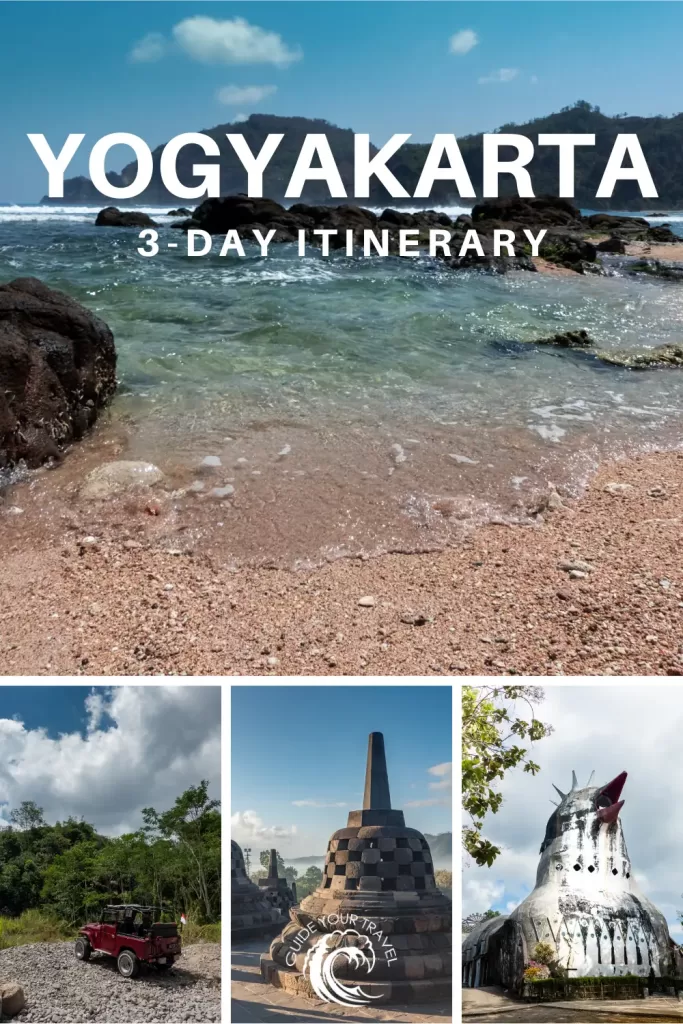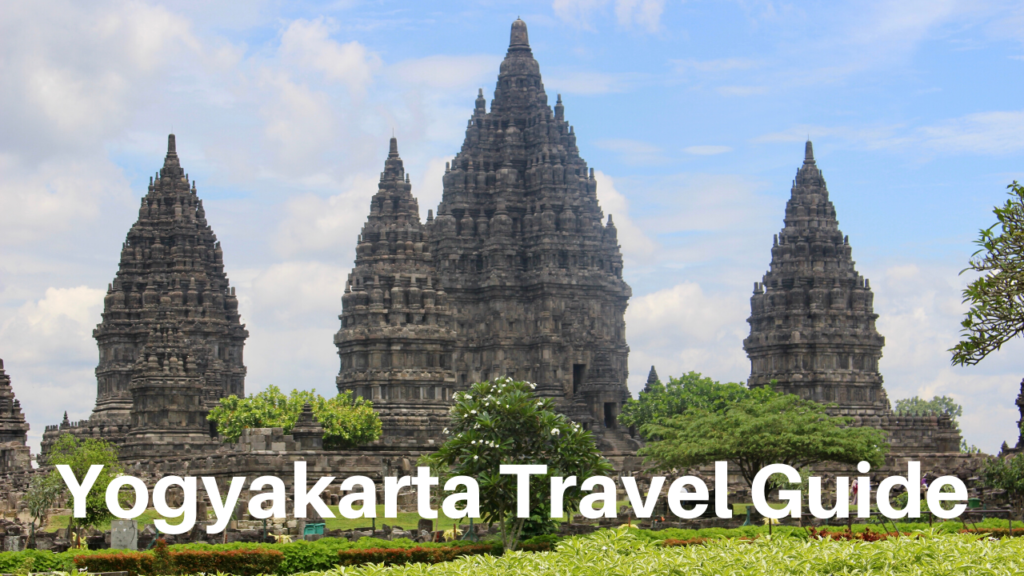
Yogyakarta, affectionately known as "Jogja," is a city that pulsates with a unique rhythm, a captivating blend of ancient traditions, vibrant arts, and a spirit of intellectual curiosity. Nestled on the island of Java in Indonesia, it stands as a cultural heartland, a living museum where the grandeur of Javanese royalty and the echoes of ancient civilizations coexist with a dynamic contemporary scene. Traveling to Yogyakarta is not just about visiting a destination; it’s an immersion into the very soul of Java, an experience that will leave an indelible mark on your heart.
This comprehensive guide will equip you with everything you need to embark on your unforgettable journey to this enchanting city.
A Tapestry of History: From Ancient Kingdoms to Modern Resilience

Related Articles about Yogyakarta: A Journey into the Soul of Java:
- Busan: A Coastal Gem of South Korea
- Barcelona’s Beckoning: A Comprehensive Guide to the Catalan Capital’s Top Attractions
- Madrid: A Tapestry of Royal Grandeur, Artistic Soul, and Vibrant Life
- Portugal: A Sun-Kissed Sojourn Through History, Culture, and Culinary Delights
- The Enchanting Emerald Isle of Europe: A Comprehensive Travel Guide to the Czech Republic
Yogyakarta’s history is deeply intertwined with the rich tapestry of Javanese civilization. Its origins can be traced back to the Mataram Sultanate in the 16th century, a powerful kingdom that played a pivotal role in shaping the island’s cultural and political landscape. The city’s current name, Ngayogyakarta Hadiningrat, was established in 1755 following the Treaty of Giyanti, which divided the Mataram Sultanate into two, with Yogyakarta becoming the seat of one of the new sultanates.
The Sultanate of Yogyakarta has always held a special status in Indonesia. Unlike other regions, Yogyakarta was granted special autonomy by the Indonesian government after the country’s independence in 1945, recognizing its historical significance and its role in the independence struggle. This autonomy is reflected in the continued reign of the Sultan, who also serves as the Governor of the Special Region of Yogyakarta.
Beyond its royal lineage, Yogyakarta is also a gateway to some of the world’s most magnificent ancient wonders. The majestic Borobudur Temple, a UNESCO World Heritage site and the largest Buddhist temple in the world, and the intricate Hindu complex of Prambanan Temple, a testament to the region’s spiritual past, are just a stone’s throw away, drawing pilgrims and travelers from across the globe.
Top Attractions: Unveiling the Treasures of Jogja
Yogyakarta offers a diverse range of attractions that cater to every interest, from history buffs and art enthusiasts to nature lovers and foodies.
-
The Sultan’s Palace (Keraton Ngayogyakarta Hadiningrat): The beating heart of Yogyakarta, the Keraton is a sprawling complex of palaces, courtyards, and pavilions that offer a glimpse into the daily life and traditions of the Javanese royal family. Explore the intricate architecture, admire the royal artifacts, and witness traditional performances held within its walls.
-
Taman Sari (Water Castle): Located near the Keraton, Taman Sari is a former royal garden and bathing complex that exudes an air of mystery and romance. Wander through its underground tunnels, discover hidden chambers, and imagine the sultans and their consorts enjoying the tranquil surroundings.
-
Borobudur Temple: A pilgrimage for many, Borobudur is an awe-inspiring Buddhist monument dating back to the 9th century. Climb its intricate terraces, marvel at the thousands of Buddha statues, and witness the sunrise or sunset from its summit for a truly breathtaking experience.
-
Prambanan Temple: This magnificent Hindu temple complex, dedicated to the Trimurti (Brahma, Vishnu, and Shiva), is a UNESCO World Heritage site and a stunning example of ancient Javanese architecture. The intricate carvings and towering spires are a testament to the artistic and spiritual prowess of its creators.
-
Malioboro Street: The vibrant pulse of Yogyakarta, Malioboro Street is a bustling thoroughfare brimming with shops, street vendors, cafes, and restaurants. It’s the perfect place to soak in the local atmosphere, bargain for souvenirs, and indulge in delicious Javanese street food.
-
Merapi Volcano: For the adventurous, a jeep tour to the slopes of Mount Merapi, one of Indonesia’s most active volcanoes, is an exhilarating experience. Witness the raw power of nature and explore the lava fields and abandoned villages affected by past eruptions.
-
Ullen Sentalu Museum: Located in the cooler highlands of Kaliurang, this museum offers a unique and insightful look into Javanese culture and the lives of the royal families of Yogyakarta and Surakarta. Its well-curated exhibits and serene atmosphere make it a must-visit.
-
Sonobudoyo Museum: This museum houses a vast collection of Javanese artifacts, including wayang kulit (shadow puppets), traditional clothing, ceramics, and weaponry, providing a comprehensive overview of Javanese art and culture.

Travel Tips for a Seamless Journey
To ensure your trip to Yogyakarta is smooth and enjoyable, here are some essential travel tips:
- Visa Requirements: Depending on your nationality, you may need a visa to enter Indonesia. Check the latest visa regulations for your country before your trip.
- Currency: The local currency is the Indonesian Rupiah (IDR). ATMs are widely available in Yogyakarta, and credit cards are accepted in most hotels, larger restaurants, and shops. However, it’s always good to have some cash for smaller purchases and street vendors.
- Language: The official language is Indonesian. While English is spoken in tourist areas, learning a few basic Indonesian phrases like "Terima kasih" (Thank you) and "Sama-sama" (You’re welcome) will be greatly appreciated.
- Respectful Attire: When visiting religious sites like Borobudur and Prambanan, dress modestly, covering your shoulders and knees. Lightweight, breathable clothing is recommended due to the tropical climate.
- Health and Safety: Consult your doctor about necessary vaccinations before traveling. Drink bottled water to avoid stomach issues. Be mindful of your belongings in crowded areas.
- Bargaining: Bargaining is common in markets and with street vendors. Start with a reasonable offer and be polite and good-humored.
- Connectivity: Wi-Fi is readily available in hotels, cafes, and many public places. Purchasing a local SIM card can be a cost-effective way to stay connected.
Accommodation Options: From Budget to Boutique
Yogyakarta offers a diverse range of accommodation options to suit every budget and travel style.
-
Luxury Hotels: For those seeking comfort and indulgence, Yogyakarta boasts several high-end hotels offering impeccable service, stunning amenities, and prime locations. Examples include The Phoenix Hotel Yogyakarta, Grand Mercure Yogyakarta Adisucipto, and Hyatt Regency Yogyakarta.
-
Mid-Range Hotels: You’ll find a plethora of comfortable and well-appointed mid-range hotels that offer a good balance of value and quality. These often provide essential amenities and are conveniently located.
-
Boutique Hotels and Guesthouses: For a more intimate and personalized experience, consider staying in a boutique hotel or a charming guesthouse. Many of these offer unique architectural designs, local character, and a warm atmosphere.
-
Budget Hostels and Homestays: Yogyakarta is a backpacker-friendly destination, with numerous hostels and homestays offering affordable dormitory beds and private rooms. These are great for solo travelers and those looking to connect with other adventurers.
-
Villas and Apartments: For longer stays or for families and groups, renting a villa or apartment can be a great option, offering more space and privacy.
Transportation: Navigating the City and Beyond
Getting around Yogyakarta and its surrounding areas is relatively easy and affordable.
-
Airport Transfer: Adisucipto International Airport (JOG) is the main gateway to Yogyakarta. Taxis, ride-sharing apps like Grab and Gojek, and pre-booked airport transfers are readily available.
-
Local Transportation:
- Taxis and Ride-Sharing Apps: Grab and Gojek are ubiquitous in Yogyakarta and offer a convenient and affordable way to travel within the city. You can book cars or motorcycles depending on your needs.
- Andong (Horse-drawn Carriage): A charming and traditional way to explore the areas around the Keraton and Malioboro Street. Negotiate the fare before your ride.
- Becak (Rickshaw): Another traditional mode of transport, often used for shorter distances.
- Trans Jogja Bus: A public bus system that connects various parts of the city. It’s a very budget-friendly option.
- Rental Cars and Scooters: For independent exploration, you can rent cars or scooters. Ensure you have an international driving permit and are comfortable riding in Indonesian traffic.
-
Transportation to Major Attractions:
- Borobudur and Prambanan: You can hire a private car with a driver for a day trip, join a guided tour, or take public buses (though this can be time-consuming). Ride-sharing apps are also an option for reaching these sites, though fares may be higher.
Best Time to Visit: Embracing the Javanese Seasons
Yogyakarta enjoys a tropical climate with two distinct seasons: a dry season and a wet season.
-
Dry Season (April to October): This is generally considered the best time to visit Yogyakarta. The weather is warm and sunny, with lower humidity and minimal rainfall. This makes it ideal for outdoor exploration, visiting temples, and enjoying activities like hiking and cycling.
- Peak Season: June to August can be busier with tourists, so booking accommodation and tours in advance is recommended.
-
Wet Season (November to March): The wet season brings heavier rainfall, often in the form of short, intense downpours, usually in the afternoon. While some outdoor activities might be affected, the rain can also bring a refreshing coolness.
- Shoulder Season: April and November can offer a good balance of fewer crowds and pleasant weather.
Important Note: While the seasons provide general guidance, Indonesia’s weather can be unpredictable. It’s always wise to pack for both sun and rain, regardless of the time of year.
Culinary Delights: A Feast for the Senses
Yogyakarta is a culinary paradise, offering a rich array of Javanese flavors that will tantalize your taste buds.
-
Gudeg: The undisputed king of Jogja cuisine, Gudeg is a sweet and savory jackfruit stew slow-cooked in coconut milk and palm sugar, often served with rice, chicken, and krecek (dried beef skin crackers).
-
Nasi Goreng: A ubiquitous Indonesian dish, Nasi Goreng (fried rice) in Yogyakarta has its own unique variations, often richer and more flavorful.
-
Mie Ayam: Delicious chicken noodles served with a savory broth, tender chicken pieces, and often topped with bok choy and crispy fried shallots.
-
Sate Klathak: A unique Javanese satay grilled over charcoal, often made with mutton and seasoned with a special spice blend.
-
Jajan Pasar: A delightful array of traditional Javanese sweets and snacks, perfect for an afternoon treat.
-
Angkringan: These humble roadside stalls are an integral part of Jogja’s food scene, offering affordable and delicious meals and snacks, often enjoyed late into the night.
Embark on Your Jogja Adventure
Yogyakarta is a destination that promises an enriching and unforgettable travel experience. From its ancient temples that whisper tales of bygone eras to its vibrant streets alive with the spirit of innovation and creativity, Jogja offers a journey that goes beyond sightseeing. It’s an invitation to connect with a culture, to savor its flavors, and to embrace the warmth of its people. So, pack your bags, open your mind, and prepare to be captivated by the magic of Yogyakarta, the soul of Java.





